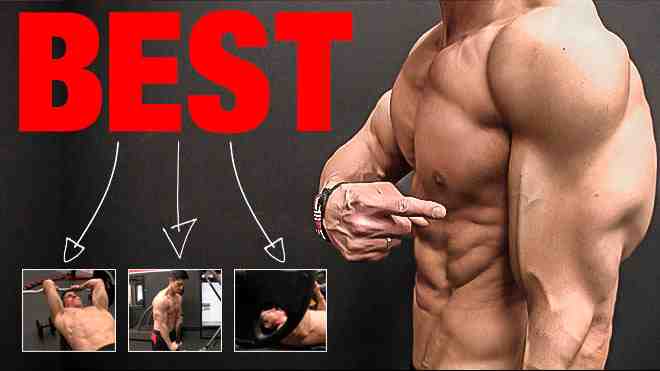Introduction
Triceps tendonitis, a condition that affects the tendons connecting the triceps muscles to the elbow, is a common ailment among fitness enthusiasts, athletes, and those with physically demanding jobs. The pain and discomfort it brings can be debilitating, hindering your ability to perform everyday tasks and enjoy your favorite activities. But there’s good news – it’s treatable, and you can regain your strength and mobility.
SHOP FOR THE ADJUSTABLE DUMBBELL SET ON AMAZON
In this article, we’ll explore effective exercises for triceps tendonitis, focusing on your recovery journey. These exercises can be a game-changer for your recovery and overall well-being. By the time you finish reading, you’ll be armed with the knowledge you need to find relief and bounce back from triceps tendonitis.
Understanding Triceps Tendonitis
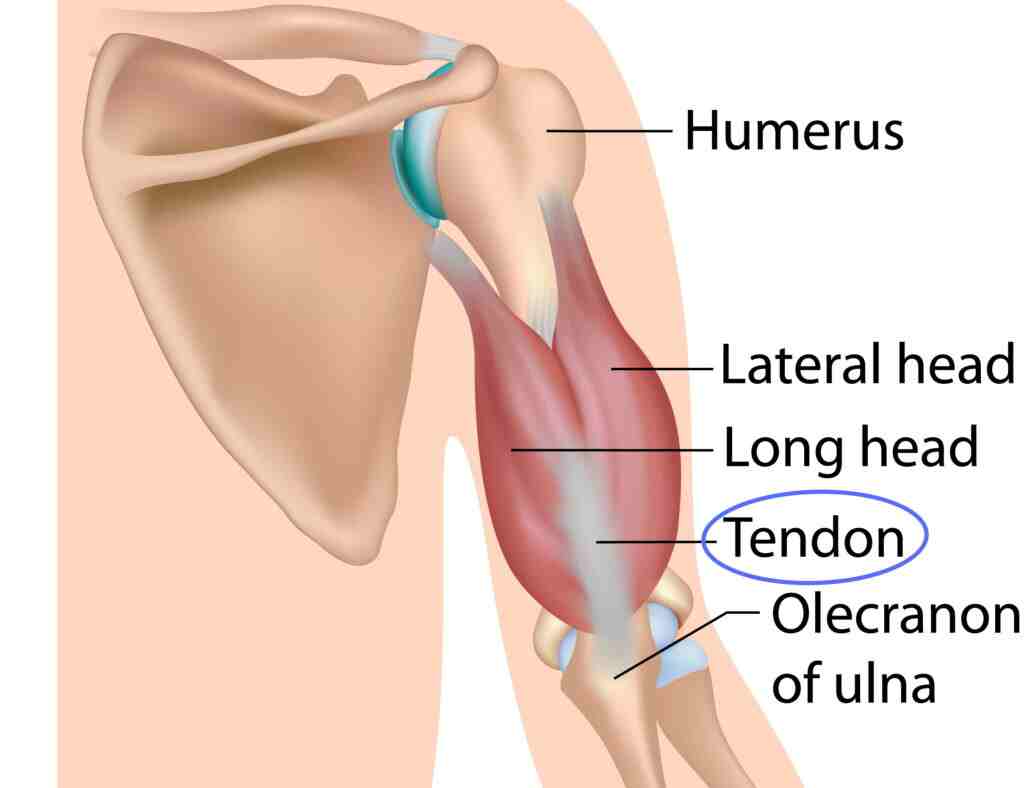
Triceps tendonitis is a painful condition that affects the triceps tendon, which connects the triceps muscle to the elbow. To fully grasp the implications of this condition, let’s break it down step by step:
A. Triceps Muscle and Tendon
The triceps muscle is located at the back of your upper arm and is responsible for extending your elbow. It’s a crucial muscle for various activities, including pushing, lifting, and stabilizing the arm during daily tasks.
The triceps muscle is connected to the elbow through a tough, fibrous tissue called the triceps tendon. This tendon anchors the muscle to the bone, allowing it to perform its function effectively.
B. Tendonitis Defined
Tendonitis is a condition characterized by the inflammation of a tendon. In the case of triceps tendonitis, it means that the triceps tendon has become irritated, inflamed, or damaged in some way.
C. Common Causes
Triceps tendonitis usually develops as a result of overuse or repetitive stress on the triceps tendon. This can happen due to various activities, including:
- Repetitive Arm Movements: Engaging in activities that require repetitive bending and straightening of the elbow, such as weightlifting, throwing, or performing push-ups, can put excessive strain on the triceps tendon.
- Poor Technique: Using improper form or technique during physical activities can increase the risk of triceps tendonitis. It’s crucial to maintain proper posture and body mechanics.
- Aging: As we age, our tendons tend to become less flexible and more prone to injury. This makes older individuals more susceptible to triceps tendonitis.
- Previous Injuries: Individuals who have previously injured their triceps or experienced elbow issues are more likely to develop triceps tendonitis.
D. Symptoms
The hallmark symptoms of triceps tendonitis include:
- Pain: Persistent, dull, aching pain in the back of the upper arm, near the elbow.
- Tenderness: The affected area may feel tender to the touch.
- Stiffness: Reduced range of motion and elbow stiffness can be common.
- Weakness: A weakened grip or difficulty performing activities that involve the triceps muscle.
E. Risk Factors
While triceps tendonitis can affect anyone, certain factors increase the risk of developing this condition:
- Age: As mentioned earlier, aging can make tendons more susceptible to injury.
- Occupation: Jobs that involve repetitive arm movements, such as painting or plumbing, can increase the risk.
- Sports and Activities: Athletes who participate in sports like weightlifting, tennis, or baseball, which require frequent use of the triceps, are at a higher risk.
- Overtraining: Overtraining and insufficient rest between workouts can place excessive stress on the triceps tendon.
SHOP FOR THE RESISTANCE BAND ON AMAZON
It’s essential to recognize the signs and causes of triceps tendonitis to address the condition effectively and prevent it from worsening.
Importance of Exercises for Triceps Tendonitis
Exercises are of paramount importance in the management of triceps tendonitis for several key reasons:
- Pain Reduction: Targeted exercises can help alleviate pain by improving blood circulation and releasing endorphins, which are the body’s natural painkillers.
- Strengthening: Certain exercises help strengthen the triceps muscle and the associated tendons, aiding in the healing process and reducing the risk of reinjury.
- Improved Flexibility: Stretching exercises can enhance the flexibility of the triceps and adjacent muscles, reducing the strain on the tendon and promoting mobility.
- Prevention: Engaging in exercises and following a comprehensive rehabilitation program can help prevent the recurrence of triceps tendonitis, ensuring long-term recovery.
- Non-Invasive Approach: Exercise is a non-invasive and cost-effective approach to managing triceps tendonitis, often reducing the need for more invasive treatments like surgery.
- Enhanced Overall Well-Being: Regular exercise can boost your mood, reduce stress, and improve your overall physical and mental well-being, which is crucial during the healing process.
SHOP FOR THE FOAM ROLLER ON AMAZON
Incorporating these exercises into your daily routine, under the guidance of a healthcare professional, can significantly improve your triceps tendonitis and promote a faster and more complete recovery.
Exercises for Triceps Tendonitis
Here are some effective exercises for triceps tendonitis that can help alleviate pain and promote healing.
Triceps towel stretch

Stand with one arm holding the end of a towel over your head. Put your other arm behind your back and grab the towel. Stretch your top arm behind your head by pulling the towel down toward the floor with hand of your bottom arm. Keep the elbow of your top arm as close to your ear as possible. Hold for 15-20 seconds and repeat 3-6 times.
French stretch
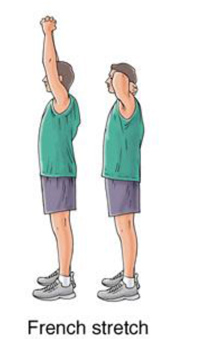
Stand upright with your fingers in a prayer position and your hands high above your head. Stretch your arm by reaching toward your upper back behind your head while keeping your hands clasped together. Keep your elbows as close to your ears as possible. Hold for 15-20 seconds and repeat 3-6 times.
Triceps kickback stretch
Lean forward and rest your head on your uninjured arm on a table or chair for support. Hold a weight in your injured hand and keep your elbow against your side parallel to your body. Slowly straighten your arm until it is fully extended behind you. Hold for 15-20 seconds and repeat 3-6 times.
Triceps push-up
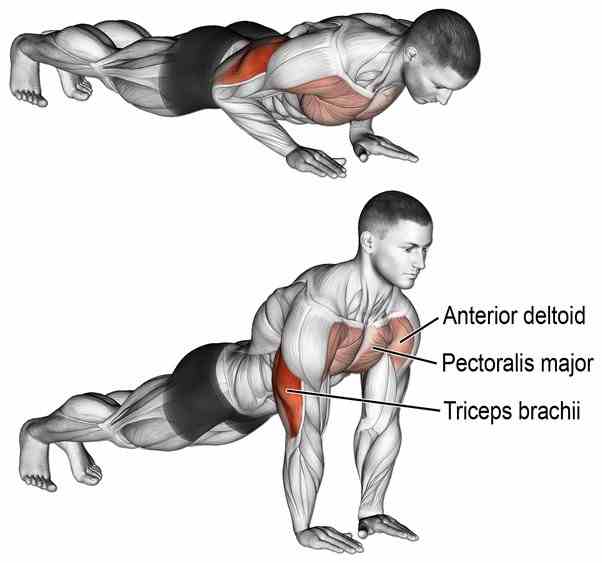
Start in a push-up position with your hands shoulder-width apart and your body in a straight line from your head to your heels. Lower your body down until your chest touches the floor, then push back up to the starting position. Be careful not to let your hips sag or your back arch.
Bench press
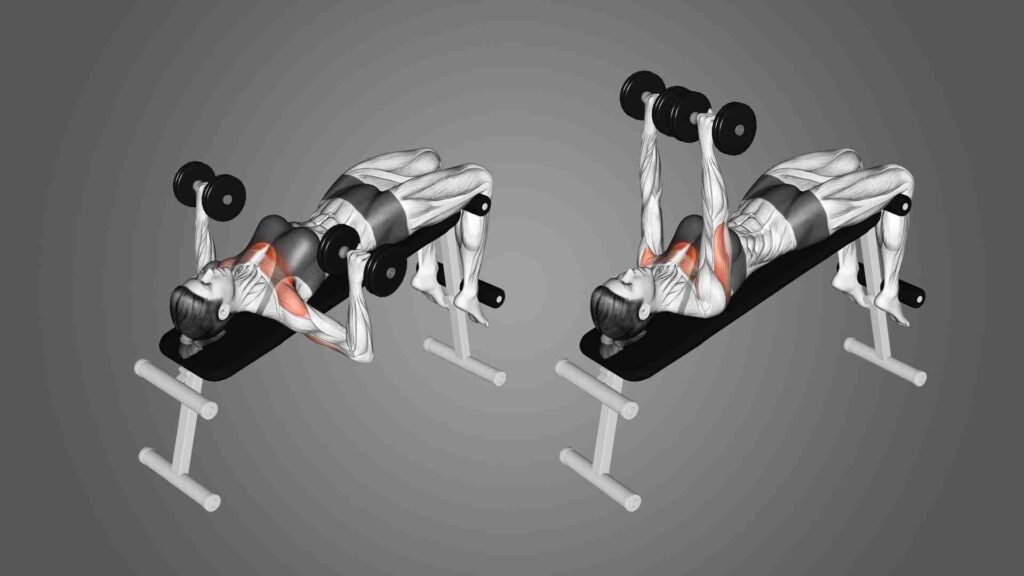
Lie on a bench with your feet flat on the floor and your back pressed against the bench. Hold a dumbbell in each hand and lower them to your chest. Then, press the dumbbells back up to the starting position. Be careful not to lock your elbows.
Triceps extension

Stand with your feet shoulder-width apart and hold a dumbbell in each hand behind your head. Keep your elbows close to your sides and extend your forearms until your arms are fully extended. Then, slowly lower the dumbbells back to the starting position.
Overhead triceps extension
Stand with your feet shoulder-width apart and hold a dumbbell in each hand above your head. Keep your elbows close to your sides and extend your forearms until your arms are fully extended. Then, slowly lower the dumbbells back to the starting position.
Close-grip bench press
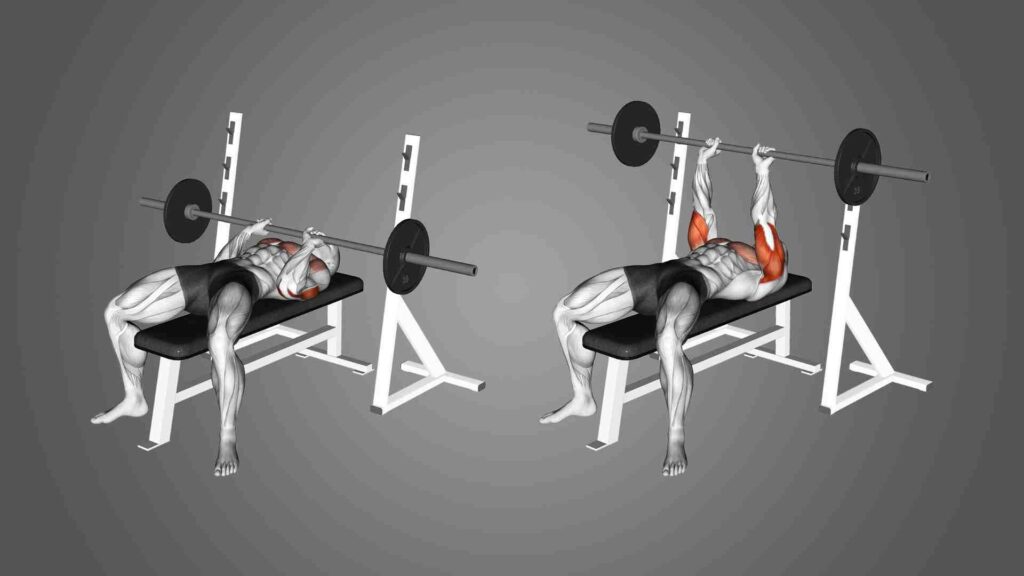
Lie on a bench with your feet flat on the floor and your back pressed against the bench. Hold a dumbbell in each hand with your hands slightly closer together than shoulder-width apart. Lower the dumbbells to your chest, then press them back up to the starting position. Be careful not to lock your elbows.
Triceps kickback
Lean forward and rest your head on your uninjured arm on a table or chair for support. Hold a weight in your injured hand and keep your elbow against your side parallel to your body. Slowly straighten your arm until it is fully extended behind you. Then, slowly lower the weight back to the starting position.
Triceps overhead press
Stand with your feet shoulder-width apart and hold a dumbbell in each hand above your head. Keep your elbows close to your sides and lower the dumbbells to your shoulders. Then, press the dumbbells back up to the starting position. Be careful not to lock your elbows.
Triceps pushdown

Stand with your feet shoulder-width apart and hold a cable attachment in each hand. Keep your elbows close to your sides and lower your hands down to your waist. Then, push your hands back up to the starting position.
Triceps rope extension
Stand with your feet shoulder-width apart and hold a triceps rope attachment in each hand. Keep your elbows close to your sides and lower your hands down to your waist. Then, push your hands back up to the starting position.
Face pull
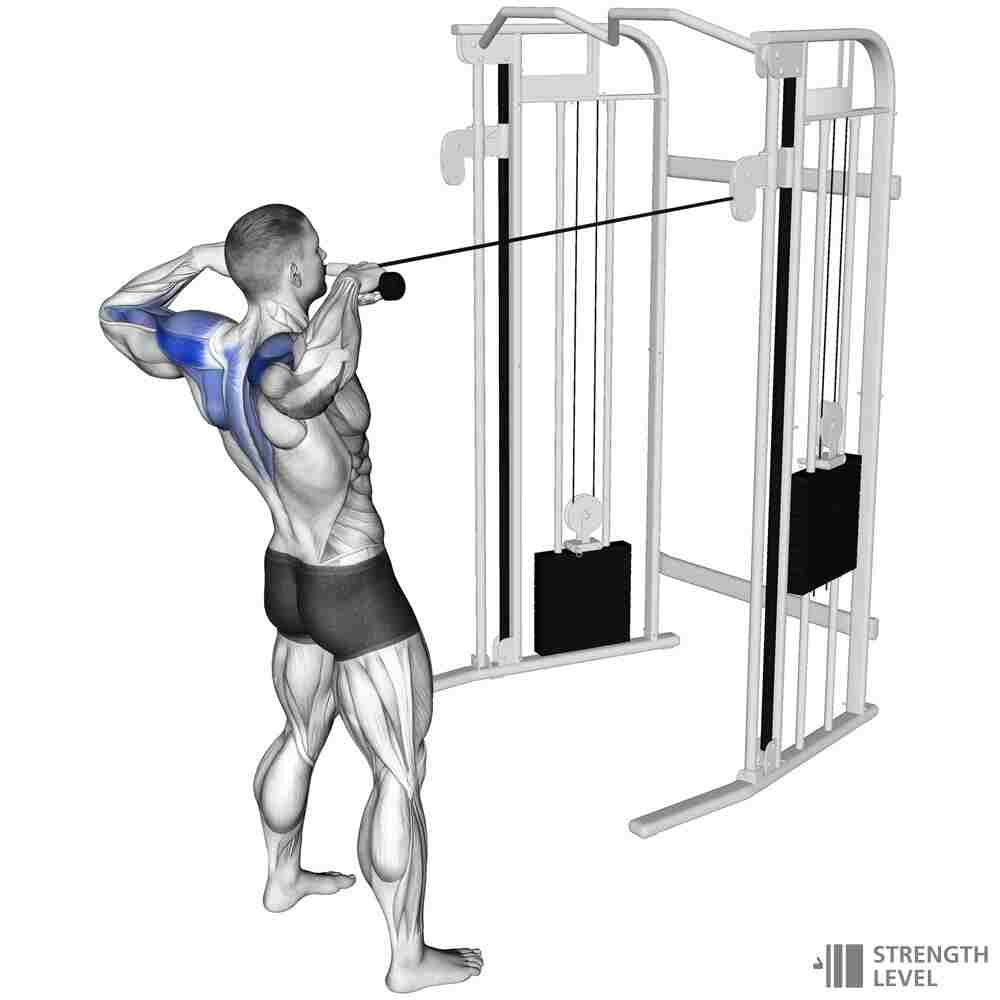
Stand with your feet shoulder-width apart and hold a cable attachment in each hand at chest height with your palms facing each other. Keep your elbows close to your sides and pull the cable attachment towards your face until your elbows are fully bent. Then, slowly release the cable attachment back to the starting position.
Remember to start with light resistance and gradually increase it as your triceps become stronger. It’s essential to maintain proper form and not push yourself too hard, especially if you experience pain during these exercises. If the pain persists or worsens, consult a medical professional for further guidance.
What is the Fastest Way to Heal Tricep Tendonitis?
The fastest way to heal tricep tendonitis is to rest the tendon and reduce inflammation. This can be done by following the RICE protocol:
- Rest: Avoid activities that aggravate your tricep pain.
- Ice: Apply ice to the affected area for 20 minutes at a time, several times a day.
- Compress: Use a bandage or wrap to compress the area and reduce swelling.
- Elevate: Keep your arm elevated above the level of your heart when you are resting.
Over-the-counter pain relievers, such as ibuprofen or acetaminophen, can also be helpful to reduce pain and inflammation.
Once the inflammation has subsided, you can begin to stretch and strengthen the triceps tendon. This will help to prevent the tendon from becoming weak and re-injured. A physical therapist can teach you specific stretches and exercises that are appropriate for your condition.
In most cases, tricep tendonitis heals within 4-6 weeks with proper treatment. However, it is important to be patient and avoid returning to activities too soon. If your pain does not improve after 6 weeks, or if it worsens, see a doctor for further evaluation.
Here are some additional tips that may help to speed up the healing process:
- Eat a healthy diet that includes plenty of fruits, vegetables, and whole grains. These foods contain nutrients that are essential for healing.
- Get enough sleep. Sleep is essential for the body to repair itself.
- Avoid smoking and excessive alcohol consumption. These substances can slow down the healing process.
If you have any questions or concerns about your tricep tendonitis, please consult with a doctor or physical therapist.
FAQs
Q 1. How is triceps tendonitis diagnosed by a healthcare professional?
Answer: Diagnosis often involves a physical examination, medical history, and may include imaging studies like X-rays or MRI to rule out other conditions.
Q 2. What are the traditional treatment methods for triceps tendonitis?
Answer: Traditional treatment options include rest, ice, anti-inflammatory medications, and physical therapy. In some cases, a brace or splint may be recommended.
Q 3. Are there exercises that can worsen triceps tendonitis?
Answer: High-intensity or improper exercises can aggravate the condition. It’s important to avoid exercises that cause pain and discomfort.
Q 4. How long does it take to recover from triceps tendonitis with exercise?
Answer: Recovery time varies from person to person. With consistent exercise and following medical advice, most individuals see improvement within a few weeks to a few months.
Q 5. Can triceps tendonitis be prevented?
Answer: Yes, it can be prevented by maintaining proper form during exercises, warming up before workouts, and gradually increasing the intensity of your training.
Q 6. What are the potential complications of untreated triceps tendonitis?
Answer: Untreated triceps tendonitis can lead to chronic pain, loss of function, and increased risk of further injury. It’s essential to address it promptly.
Q 7. When should I seek professional medical advice for triceps tendonitis?
Answer: If you experience severe pain, swelling, or if the symptoms persist despite rest and home care, it’s advisable to consult a healthcare professional for a proper diagnosis and treatment plan.
Conclusion
In conclusion, triceps tendonitis can be a painful and frustrating condition, but with the right approach, you can effectively manage and recover from it. Incorporating targeted exercises into your treatment plan can make a world of difference. By following the exercises and guidelines outlined in this article, you can take proactive steps towards healing and regaining the strength in your triceps.
Remember to consult with a healthcare professional before starting any exercise regimen, especially if you’re experiencing severe or persistent symptoms. With patience, dedication, and these exercises, you can overcome triceps tendonitis and get back to a pain-free and active life.
Also read:

Good day, and welcome to Fitthour. My name is Shubham Vijay, and I am a certified personal trainer and nutrition coach with 6 years of experience in the fitness industry. At Fitthour, we specialize in types of training, such as strength training, cardio, or HIIT, and our mission is to help clients achieve their fitness goals and improve their overall health.


